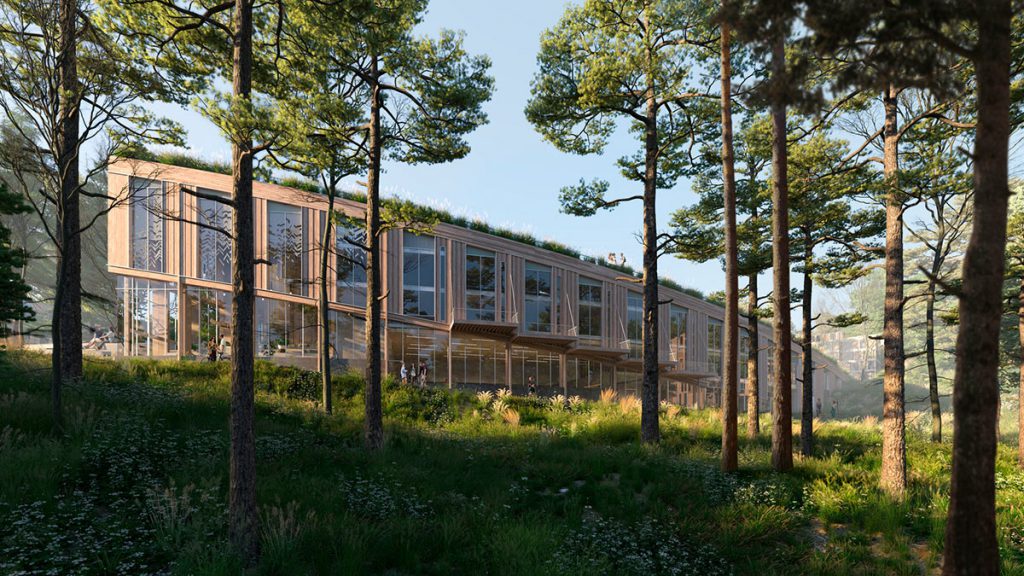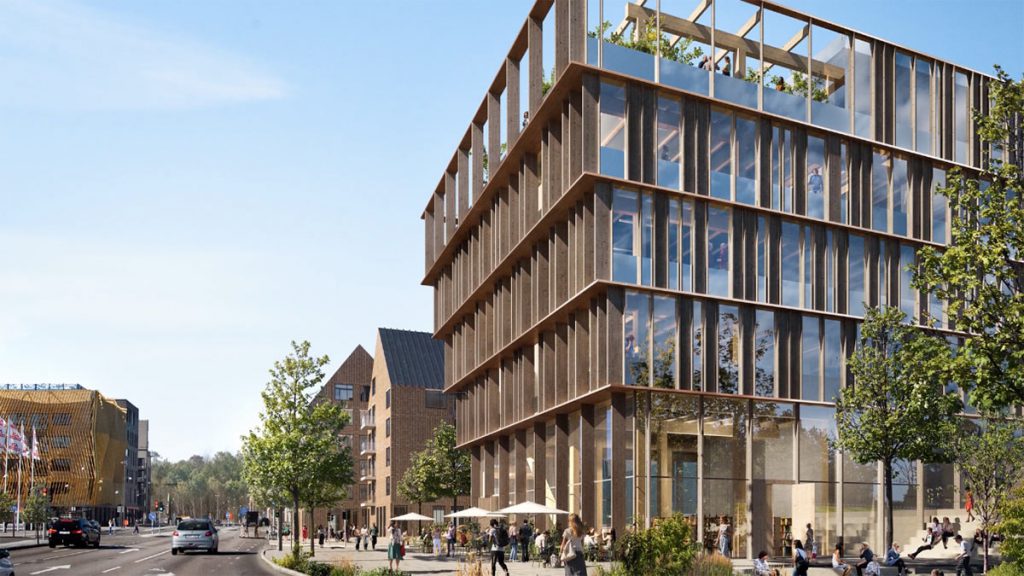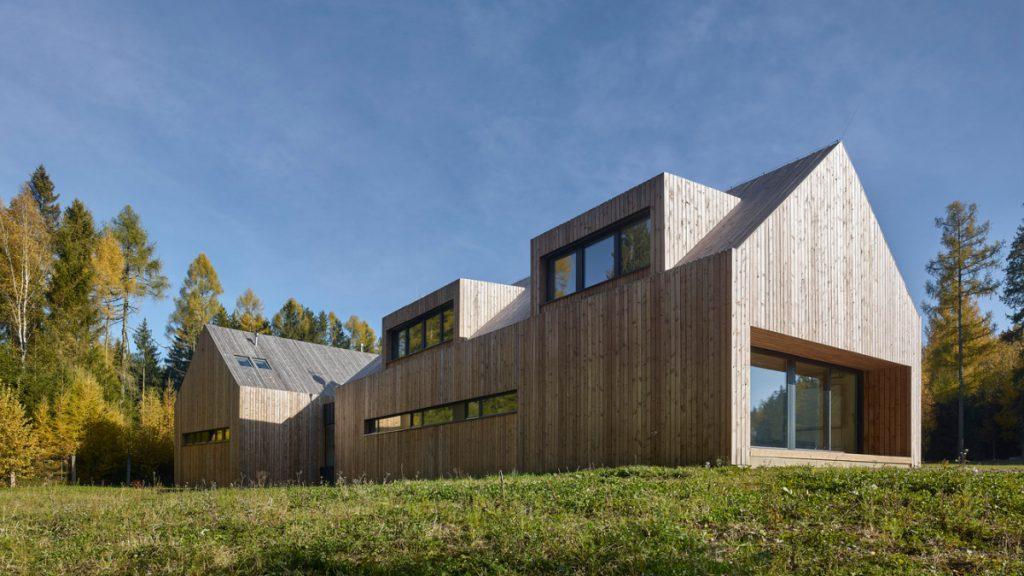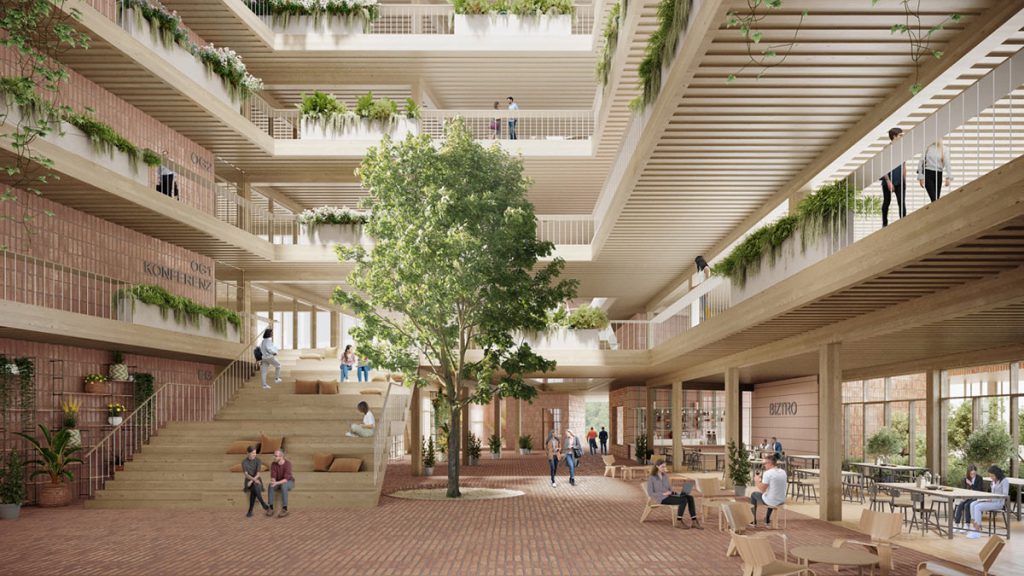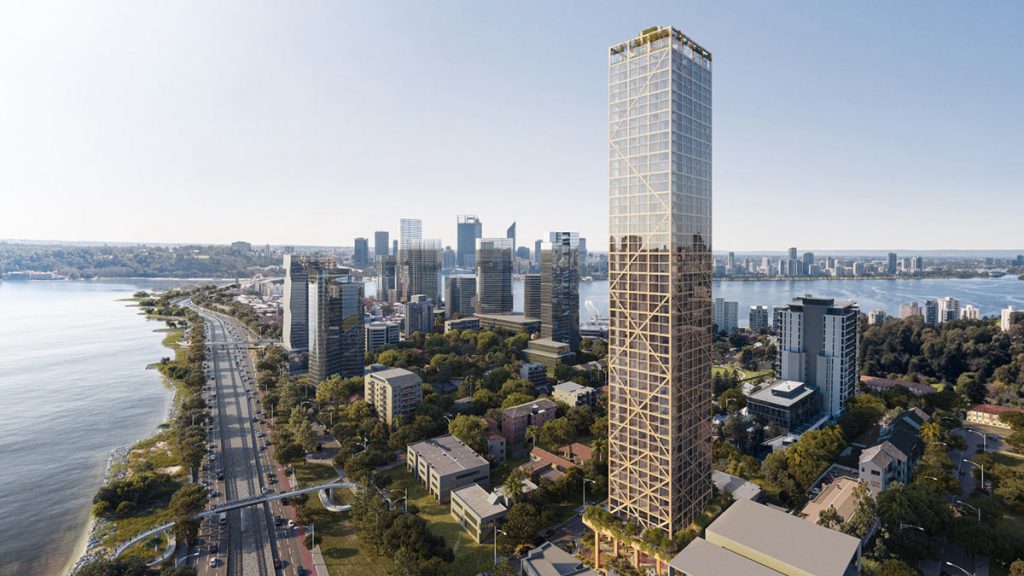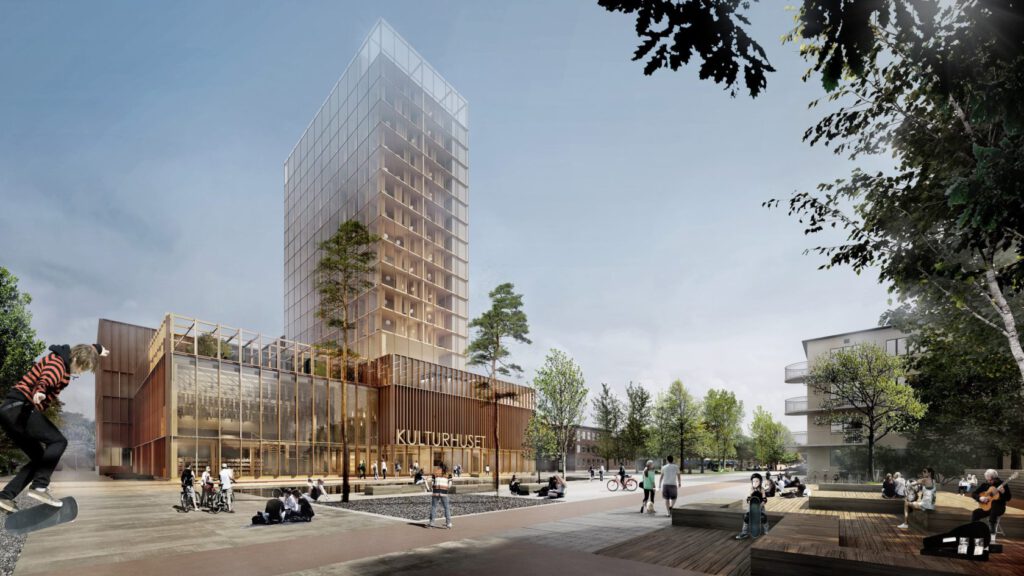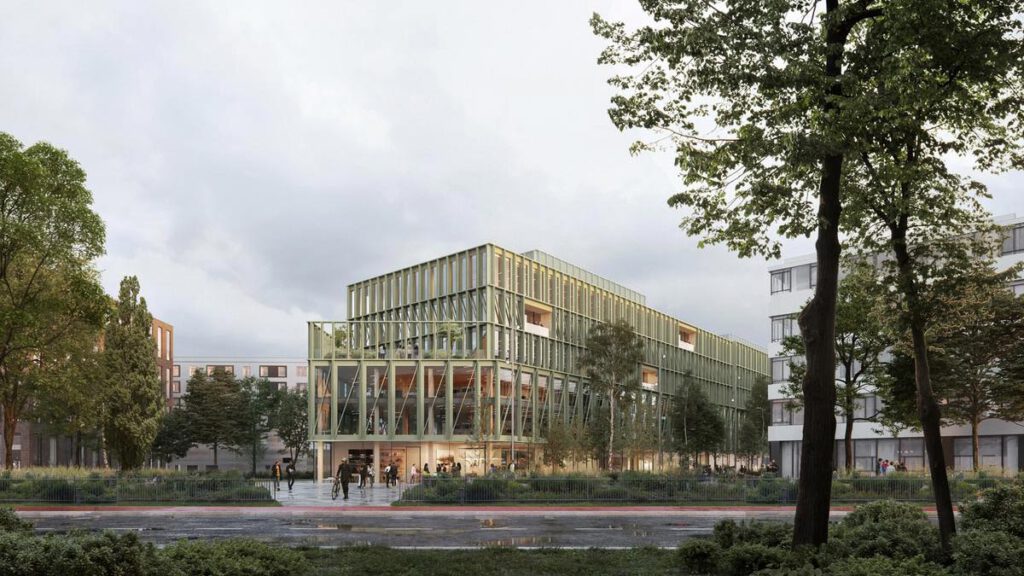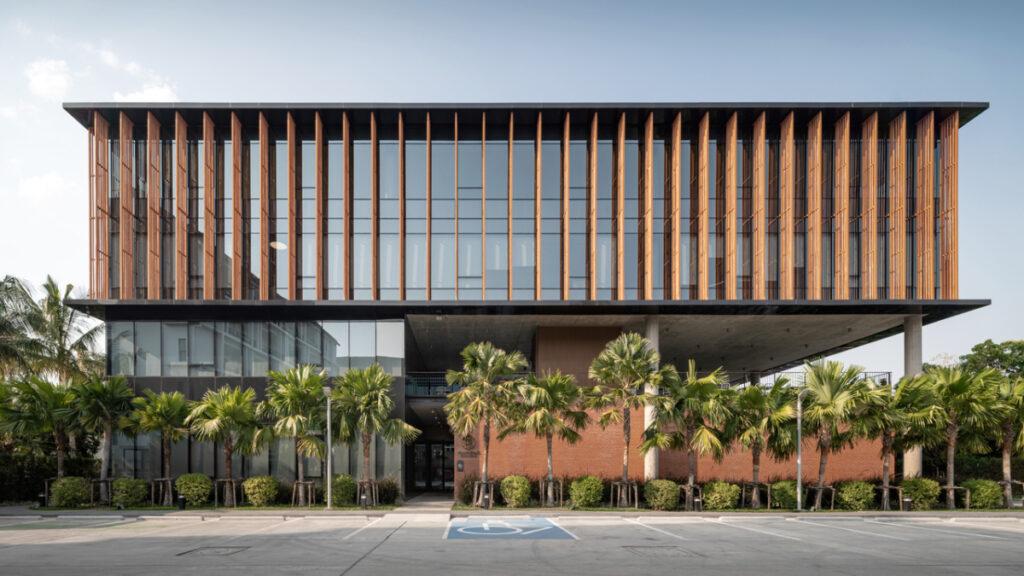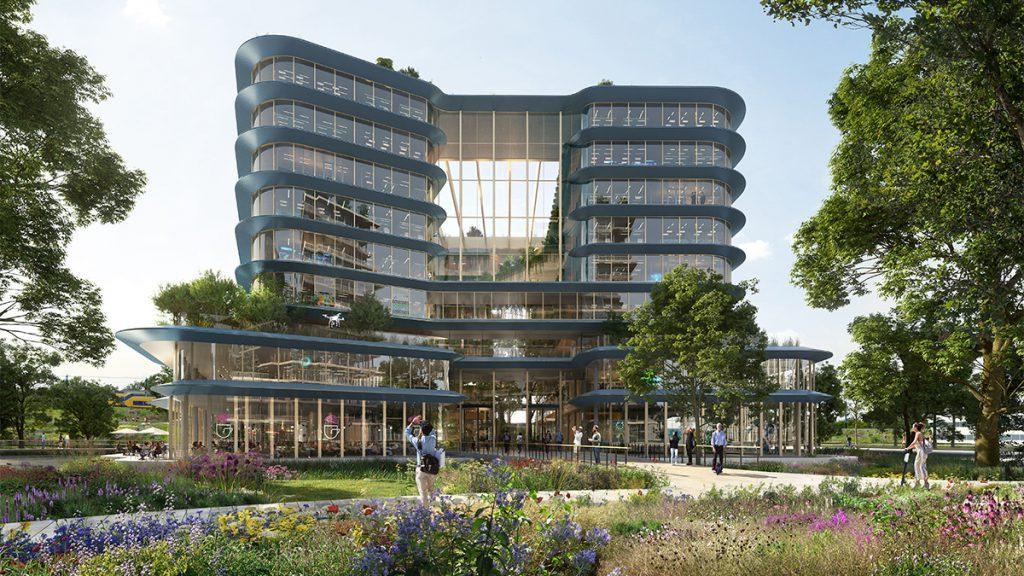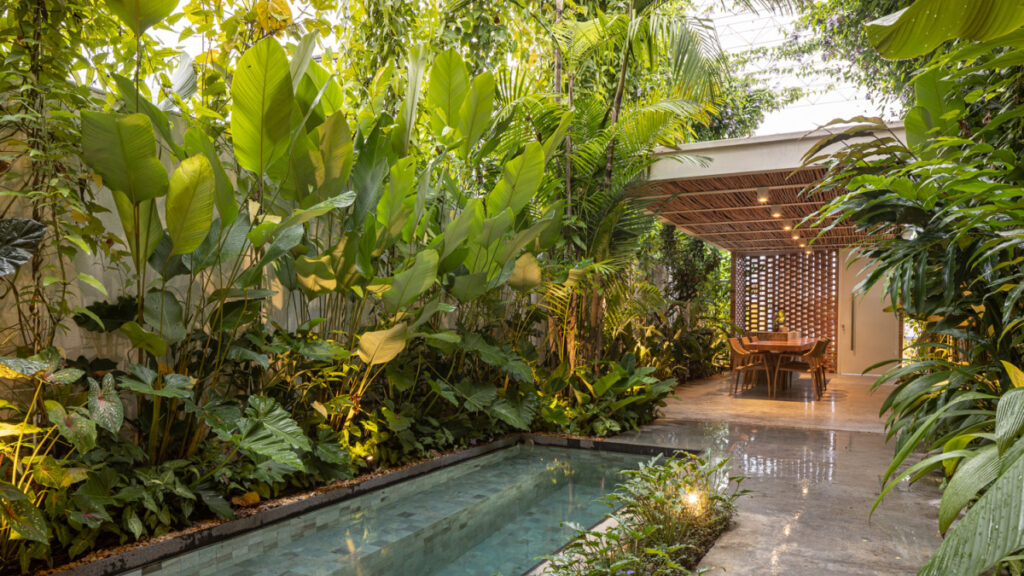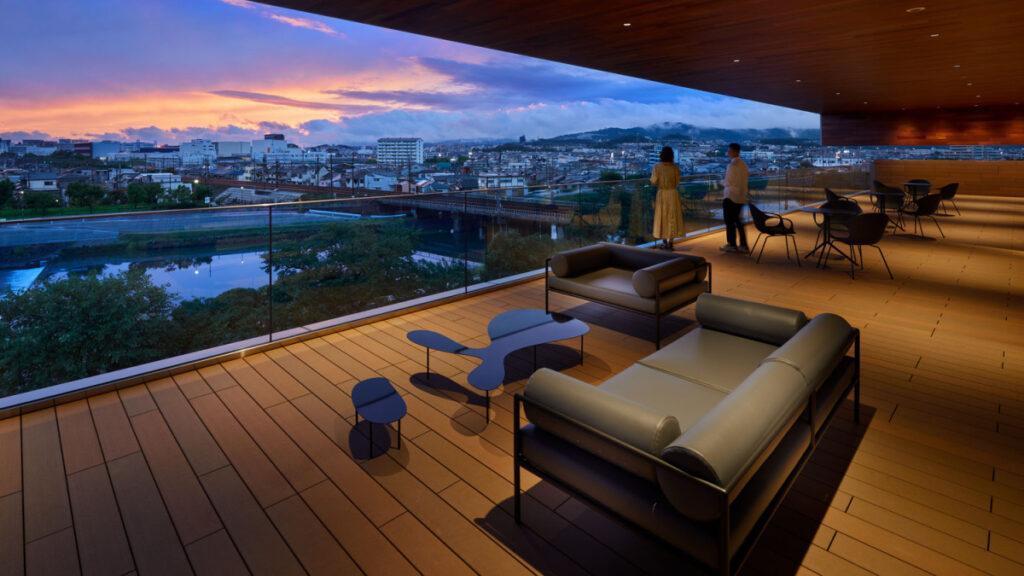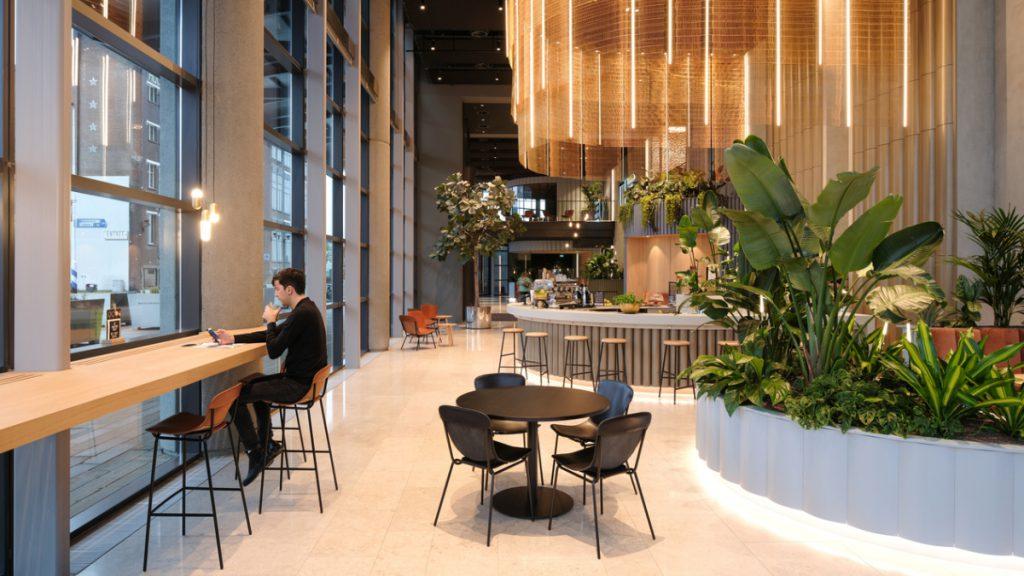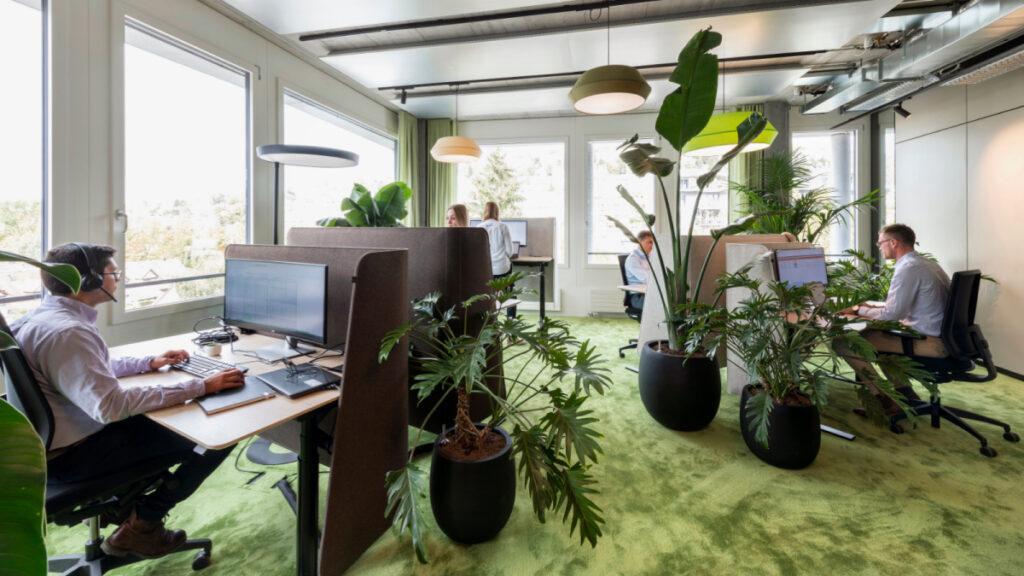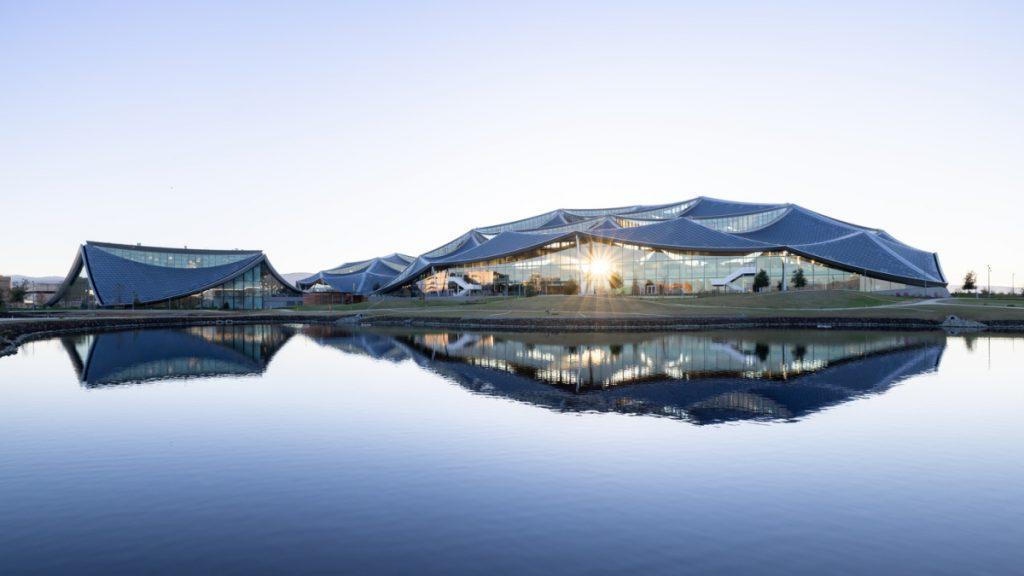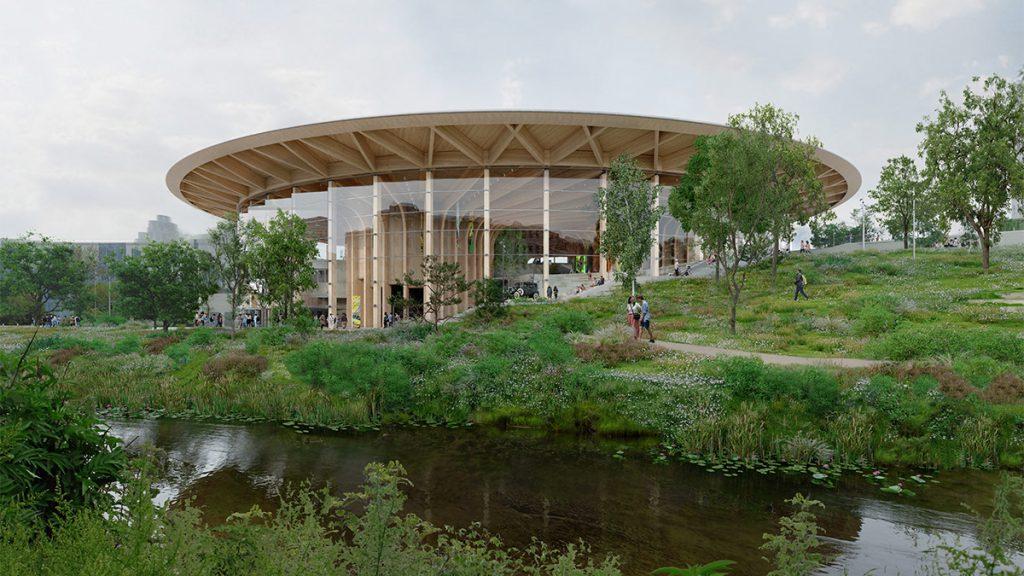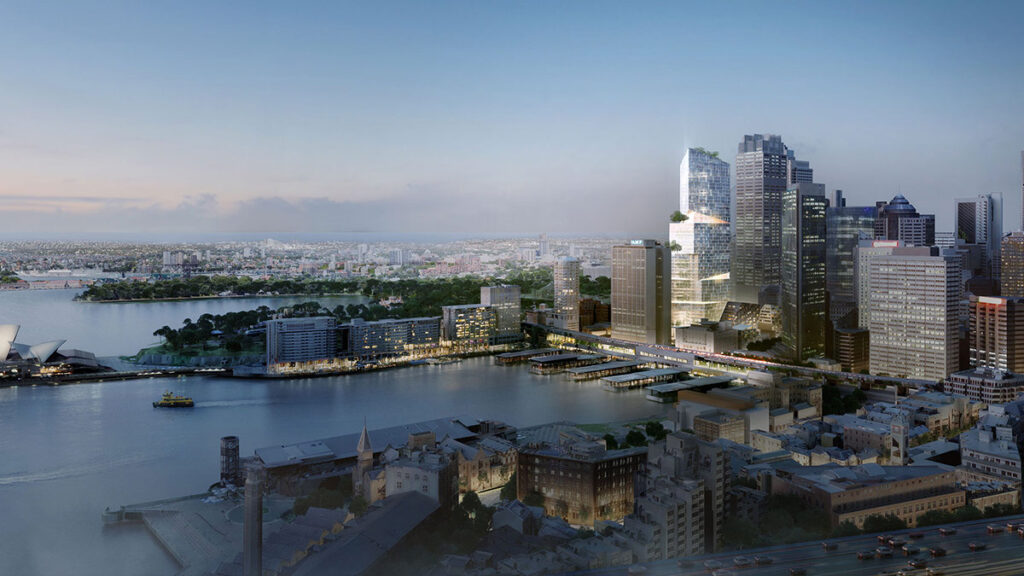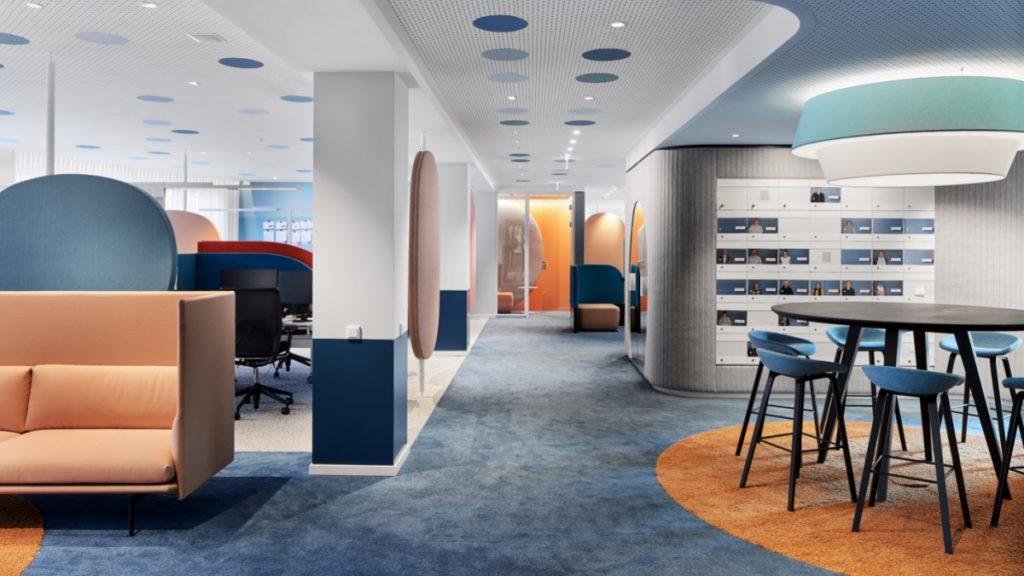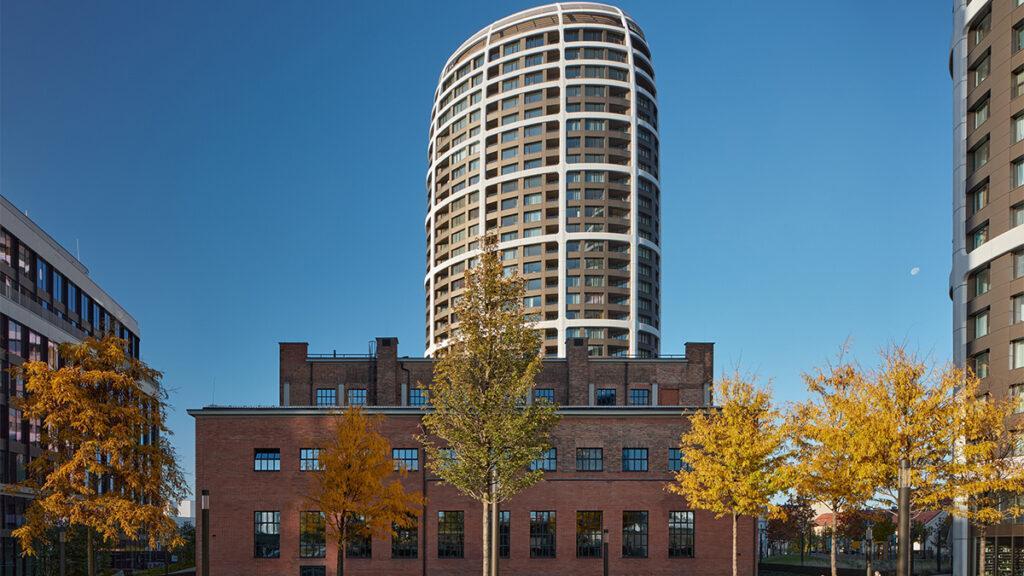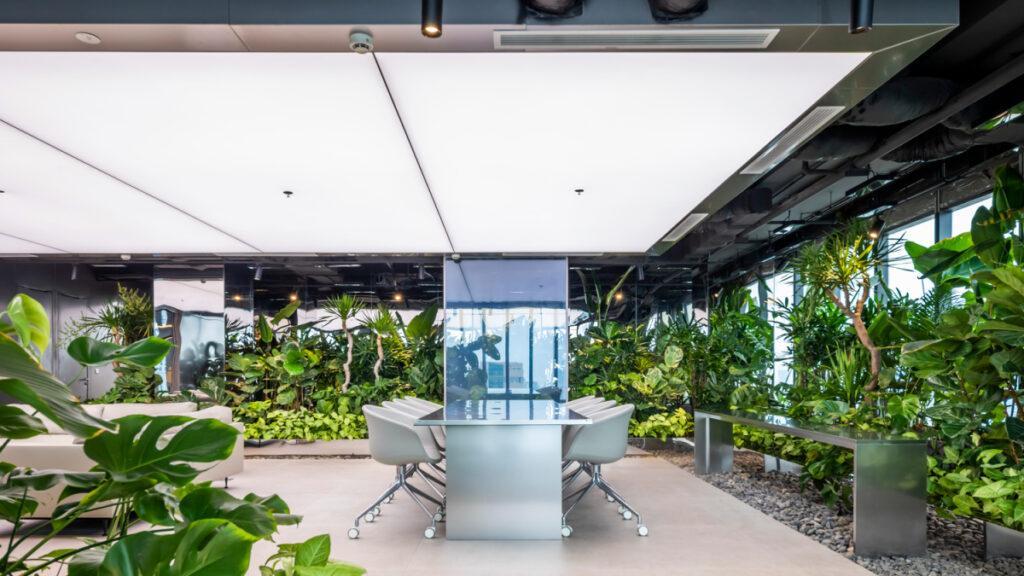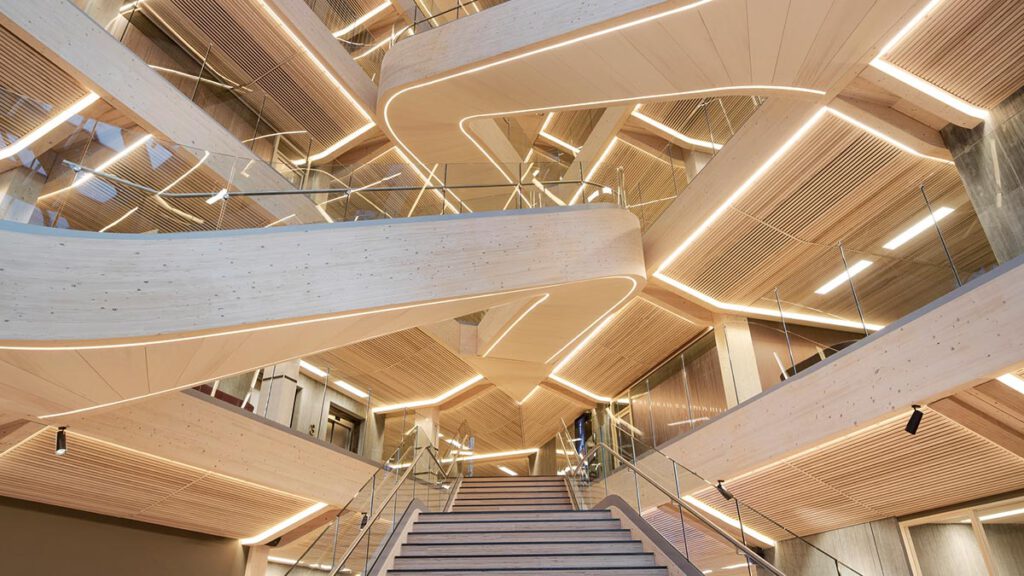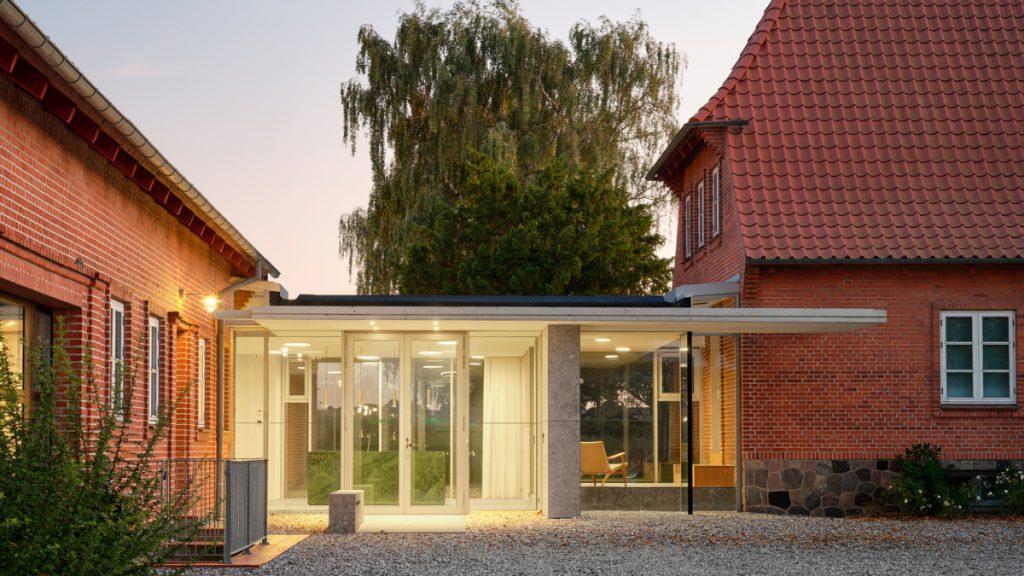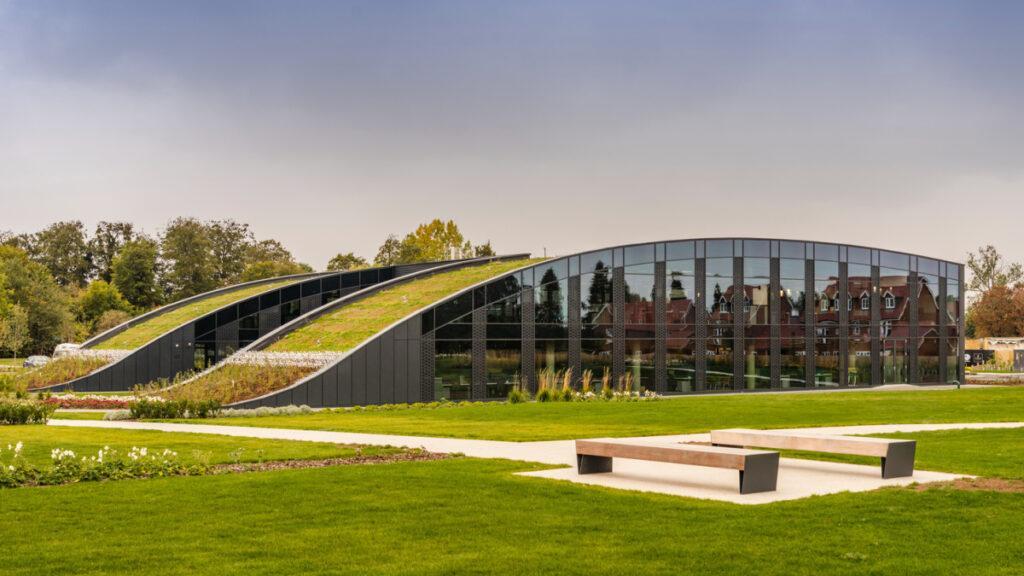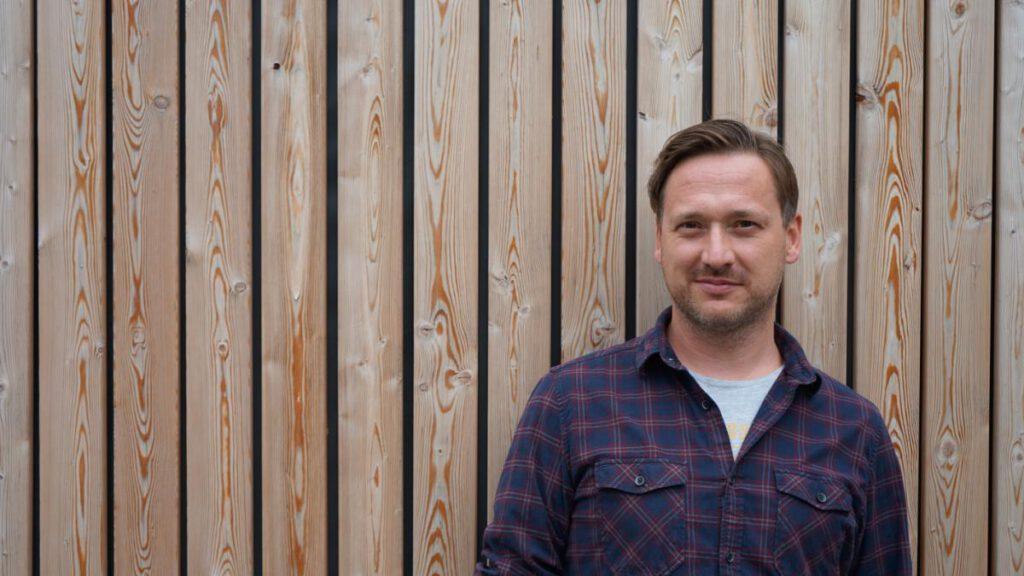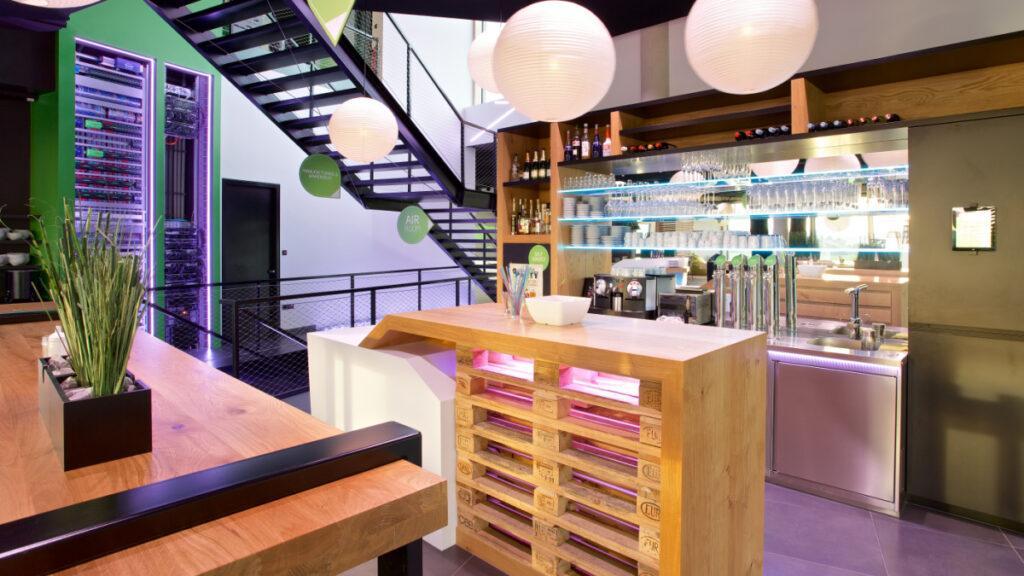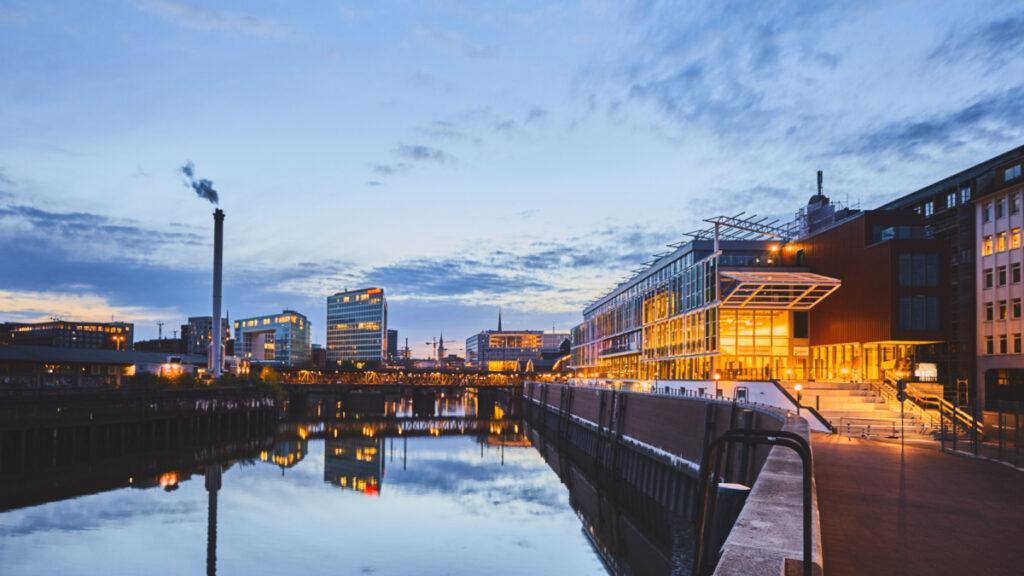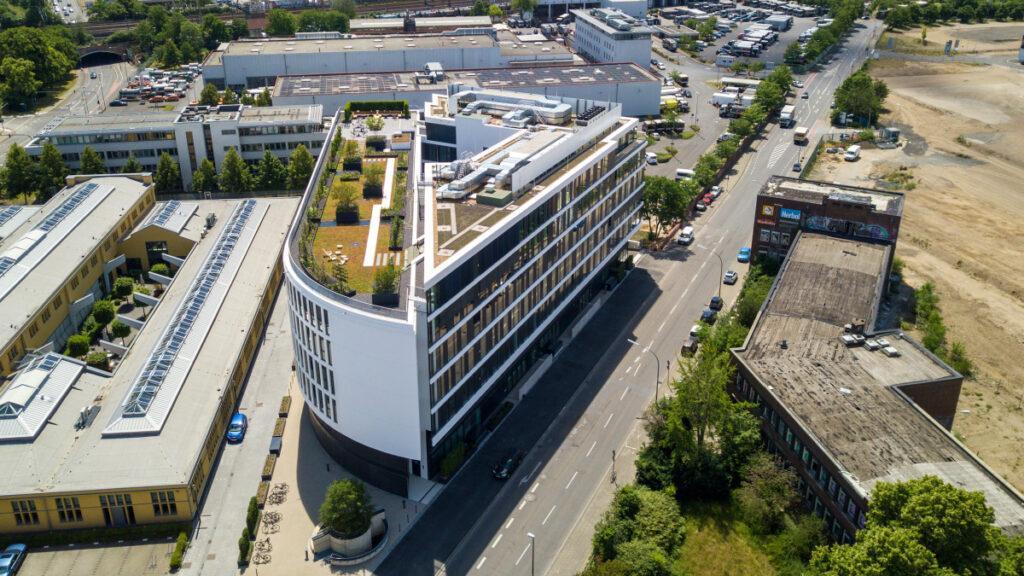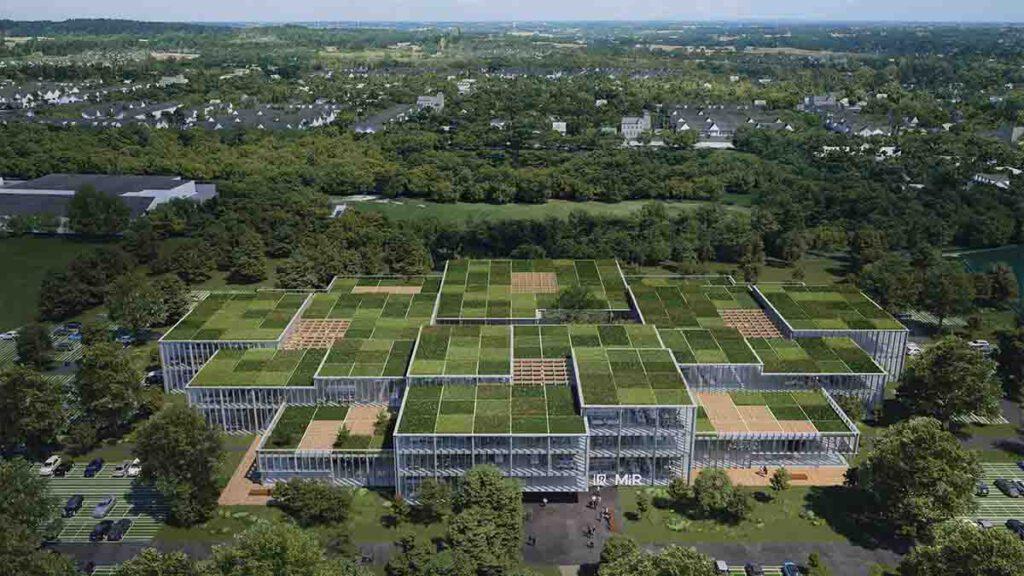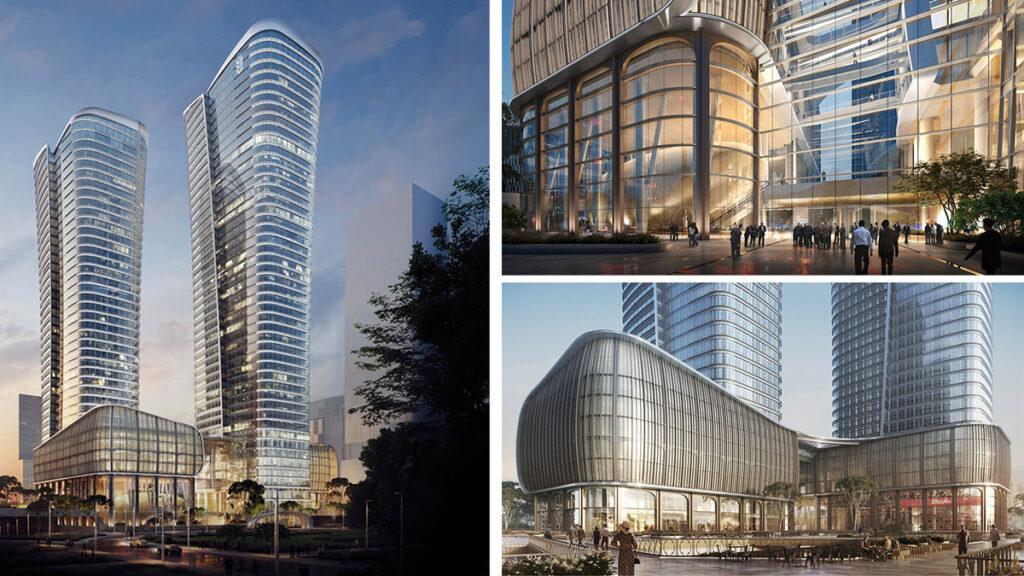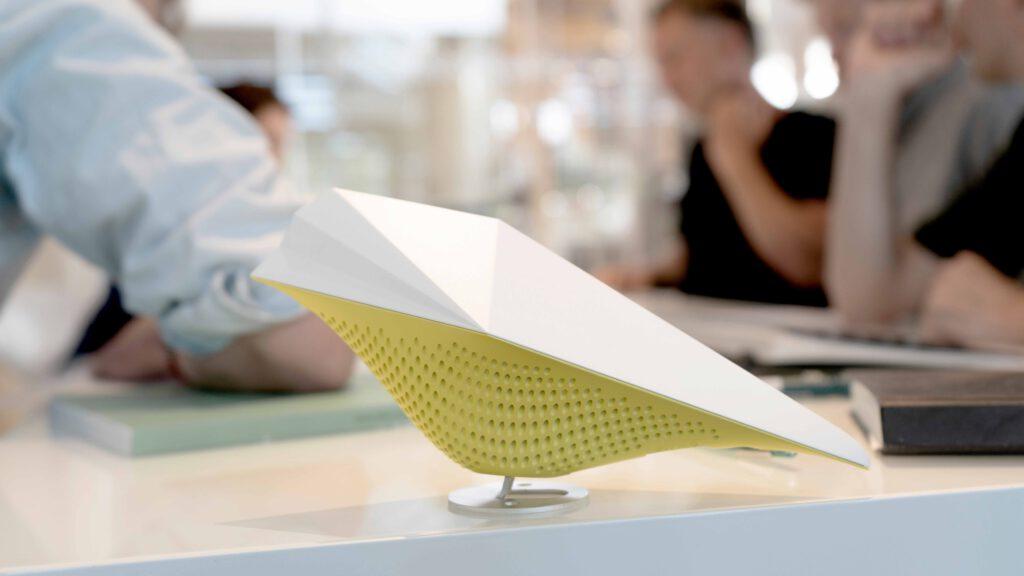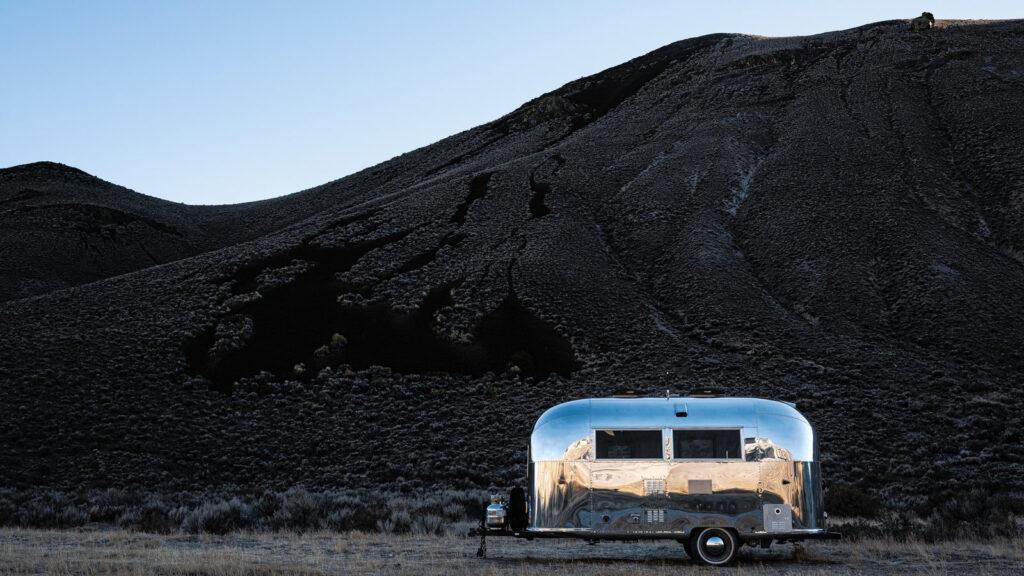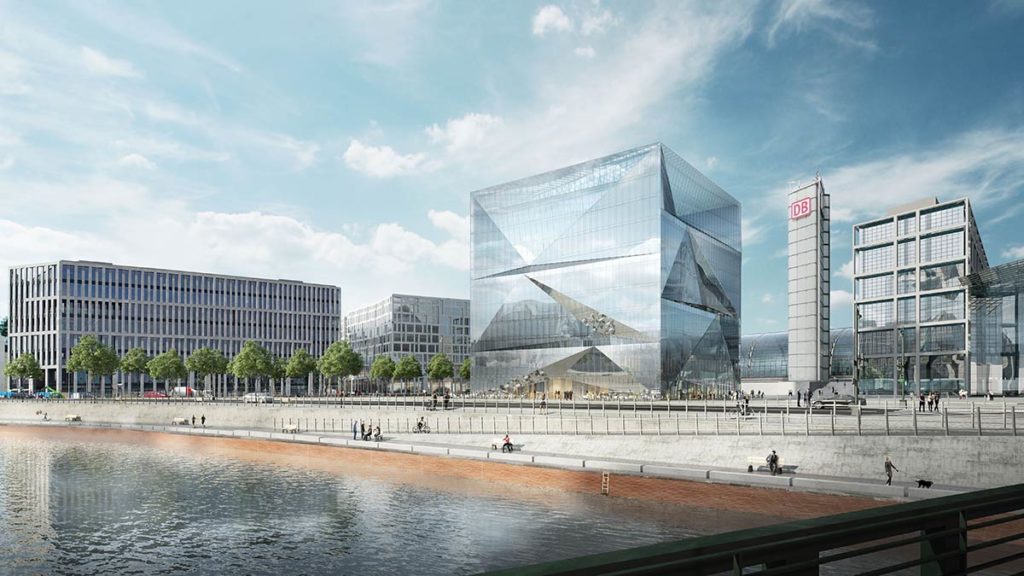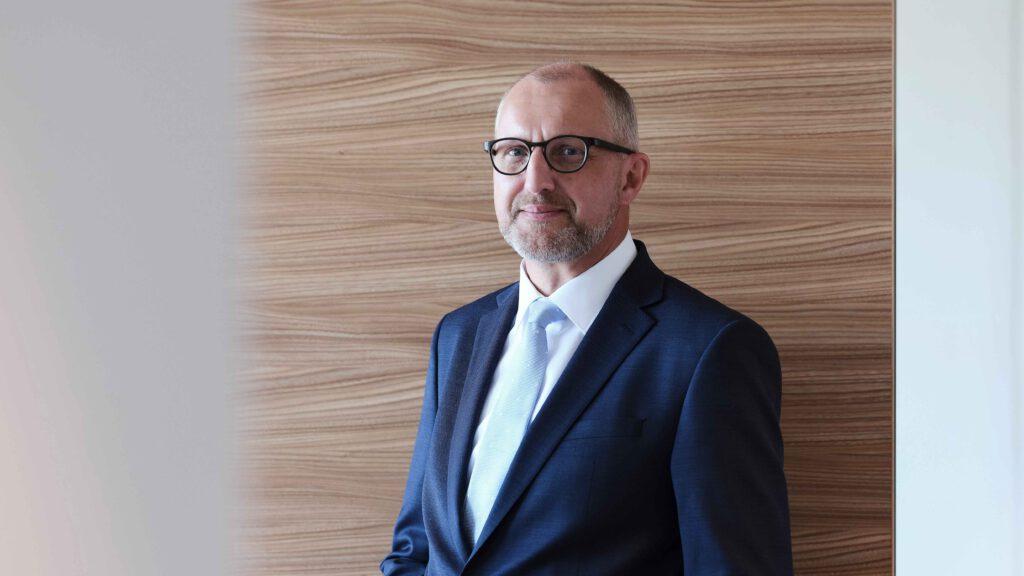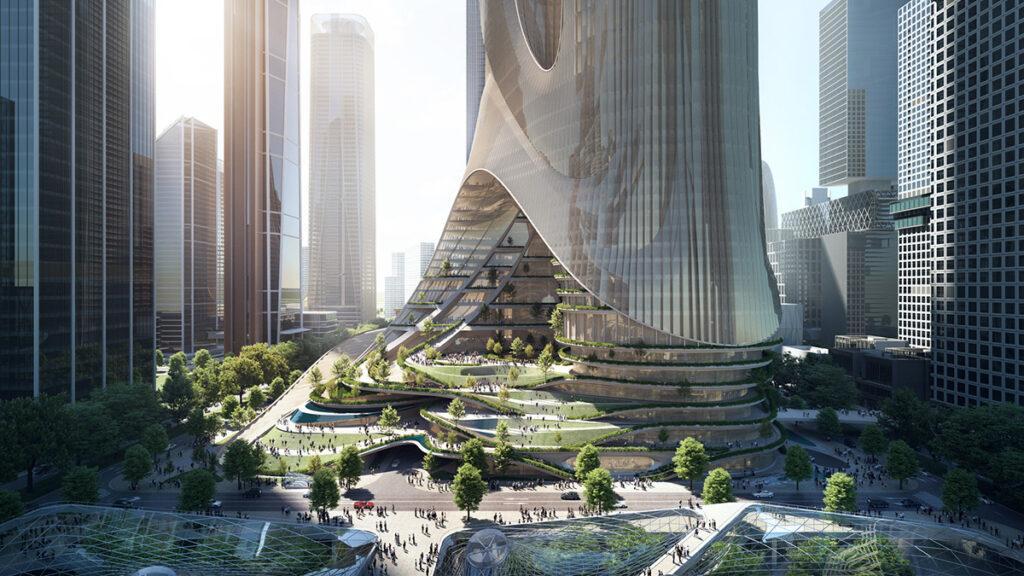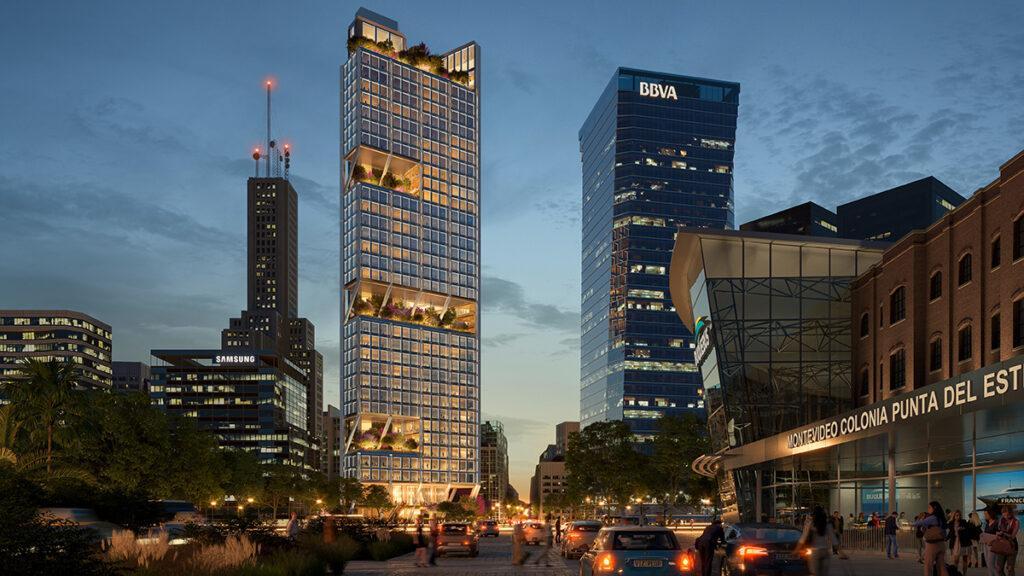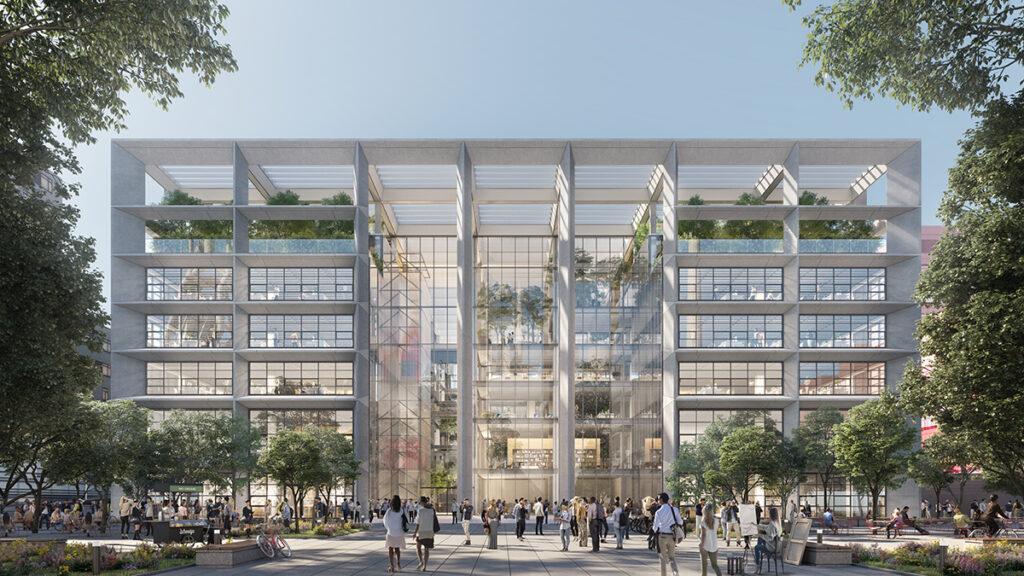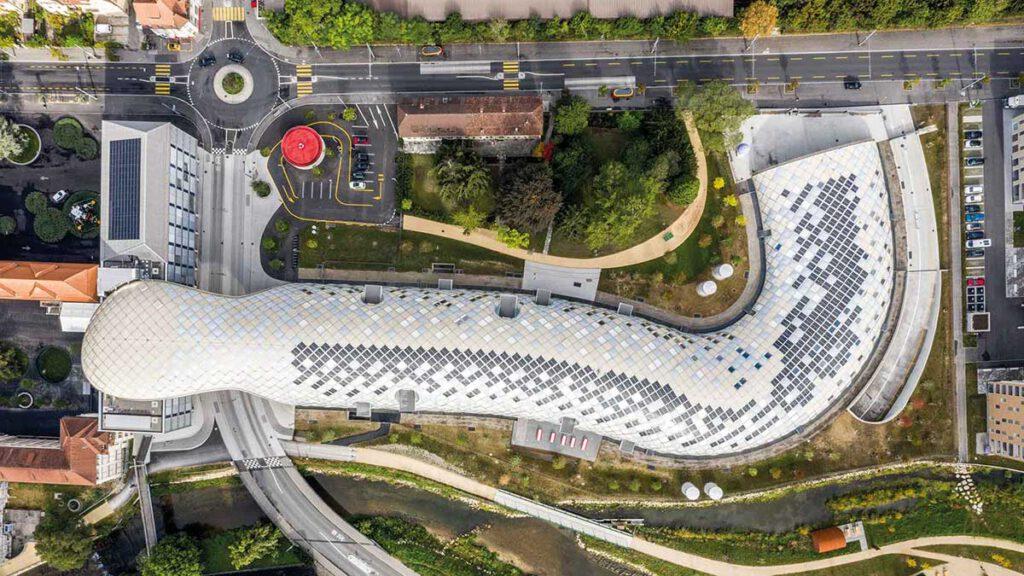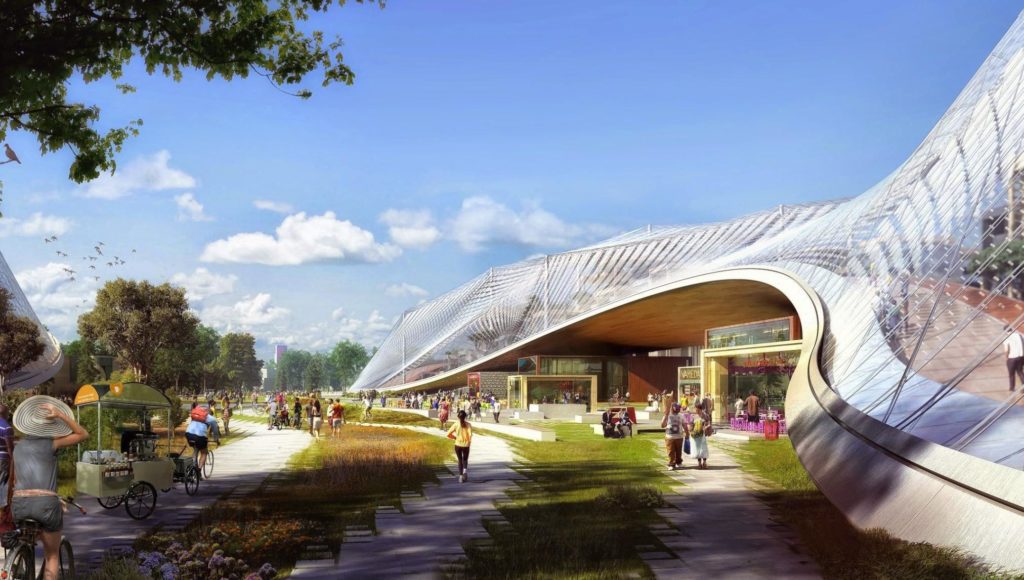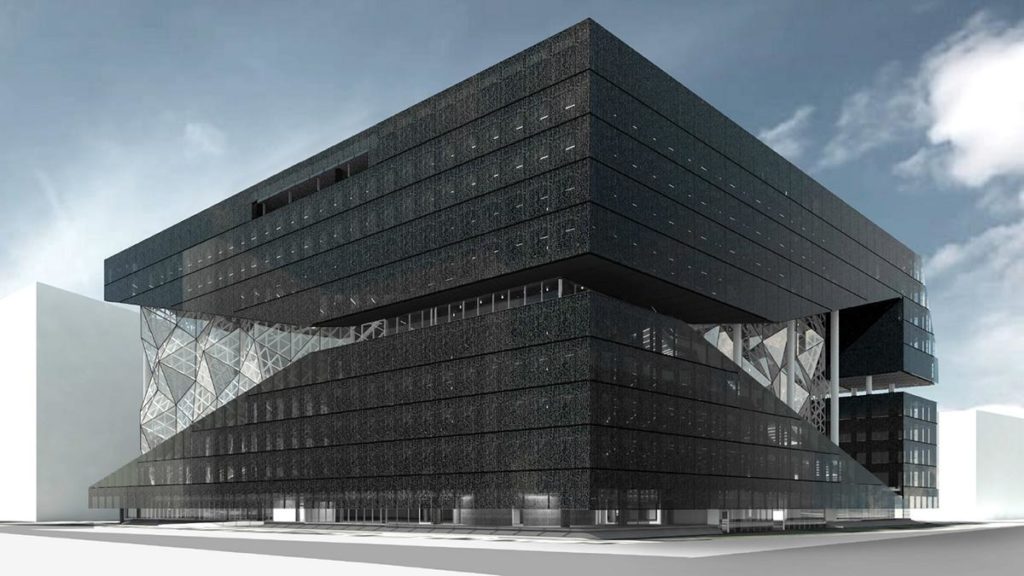
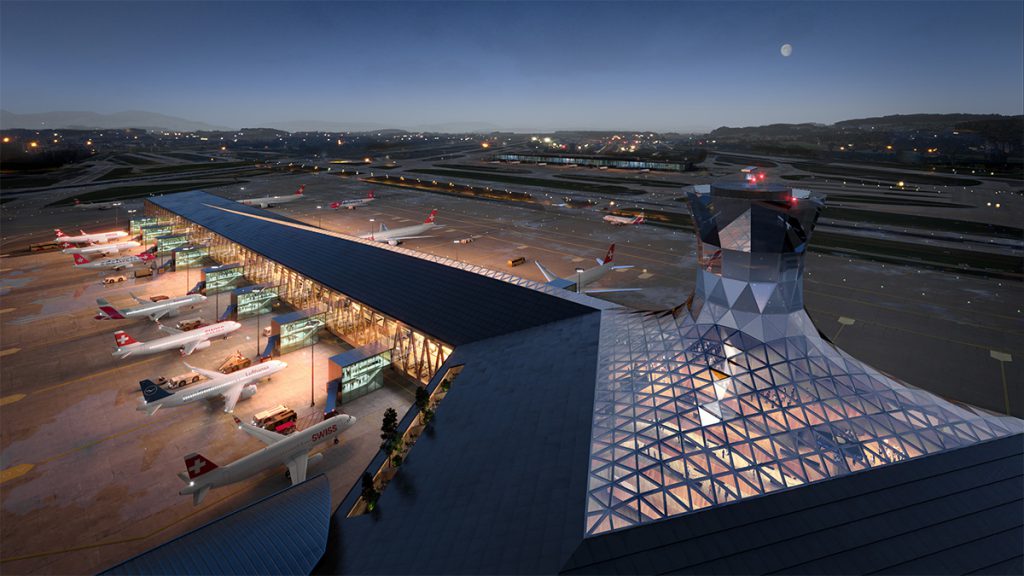
Zurich Airport opts for timber
Sustainability is reaching new heights for the new design of Dock A at Zurich Airport. In the design competition organized by Flughafen Zurich AG, the jury selected “Raumfachwerk”, a project submitted by BIG, HOK and 10:8 Architekten consisting primarily of timber.
The idea of using timber in airports could be worryingly old-fashioned for some people, but times have definitely changed. In fact, the latest project by Flughafen Zurich AG is setting new standards in sustainability – by using wood as its main building material. The new Dock A building in Switzerland’s largest airport will do wonders for passenger well-being. And it is also suitable for heralding a more environmentally friendly era in terminal construction.
Competition winner
The winning competition design for the new Dock A and its adjacent buildings is both attractive and future-oriented. “Raumfachwerk” – Space Frame – was developed by a high-calibre team led by the Bjarke Ingels Group (BIG), HOK and 10:8 Architekten. It also included engineers Buro Happold, timber experts from Pirmin Jung and aviation consultants NACO.
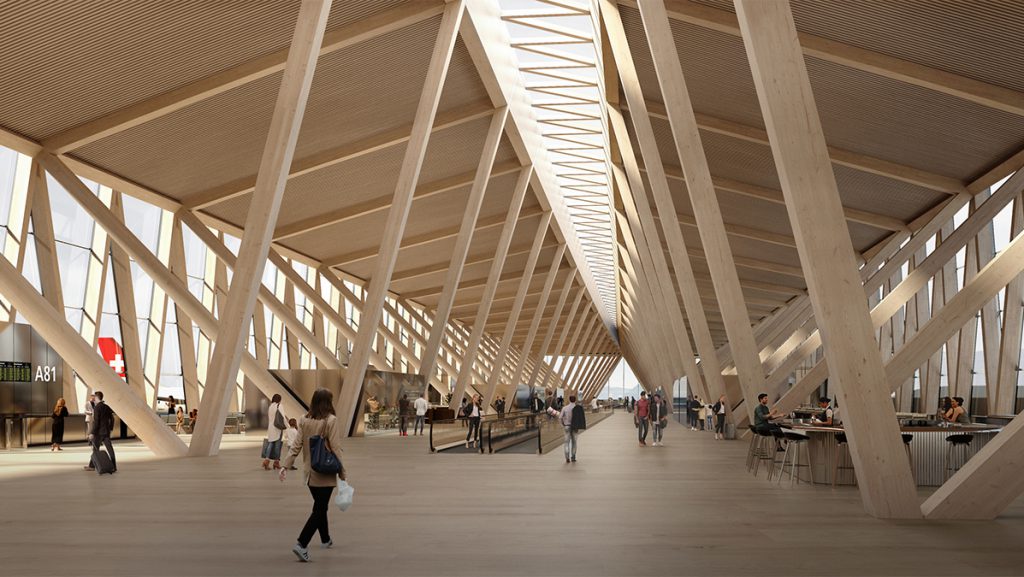
Since it opened back in the 1950s, Zurich Airport has evolved into one of the most important air traffic hubs in Europe. However, constant changes in air traffic requirements mean that airport facilities need to be renewed regularly. After carrying out several extensions – Dock E, Airside Center and The Circle – the next step for Zurich Airport is now to renew Dock A, which is well past its prime.
Sustainably compelling
Leading names like Foster + Partners, Grimshaw Architects and SOM also took part in the international, two-stage competition. President of the board of directors at Flughafen Zurich AG at the time, Andreas Schmid, explained why he and his fellow jury members chose “Raumfachwerk” as the winning entry: “This submission was the most impressive – especially from a sustainability, operational and economic perspective but also as regards architecture and urban development.”
This project is not only a new milestone for Zurich Airport but for aviation as a whole.
Prof. Harry Gugger, chairman of the competition jury
The new Dock A is expected to open in ten years. There will be Schengen and non-Schengen gates, airside retail stores, lounges and offices, plus a new air traffic control tower and an expanded immigration hall.
Lift-off for large timber projects
Jury chairman Harry Gugger described this project as a “milestone” – not just for Zurich Airport but for aviation as a whole: “It was an honour and a pleasure for the jury to support such a pioneering project. A project that will help revive the use of sustainable timber construction in large infrastructure projects.”
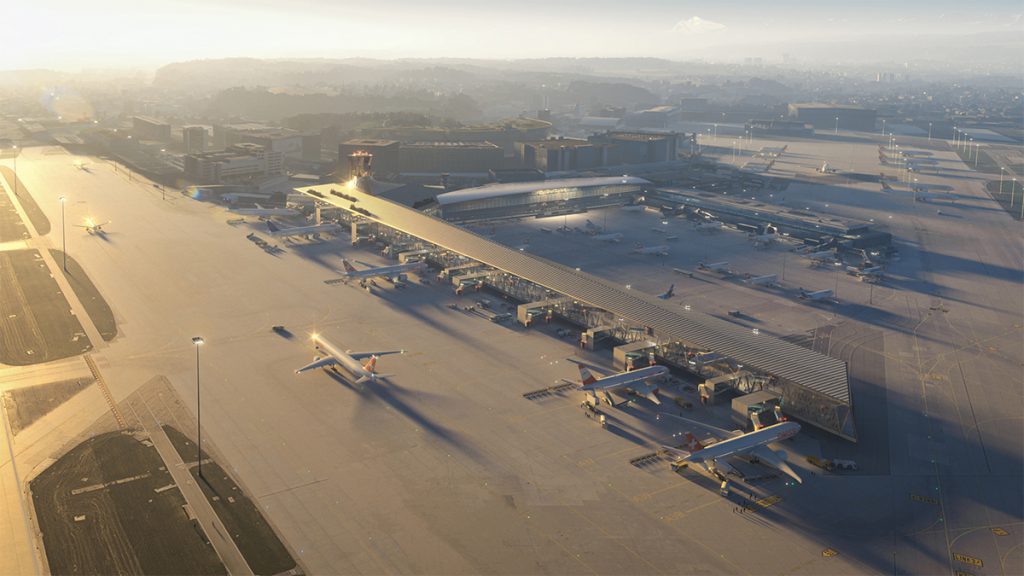
The design is based on the team’s concept for a “space frame”, i.e. a robust yet flexible support structure. It also celebrates the passenger experience and how they move through the airport. The new Dock A abuts on the Airside Center and Terminal 1, and it is defined by two main areas. Firstly, there is the central hub with retail stores, airport services for arriving and departing passengers and vertical circulation. And secondly, there is the pier with the gates, waiting areas and fixed connections to the aircraft.
“Frankenstein’s airports”
BIG founder and creative director Bjarke Ingels feels that, as airports grow and international guidelines and safety requirements change, airports are becoming “Frankenstein’s monsters of interconnected elements, patches and extensions”. For the new main terminal at Zurich Airport, the team aimed to meet this complex challenge by coming up with a solution that is as simple as possible: a solid timber space frame that is a support structure, spatial experience, architectural form and organizational principle in one.
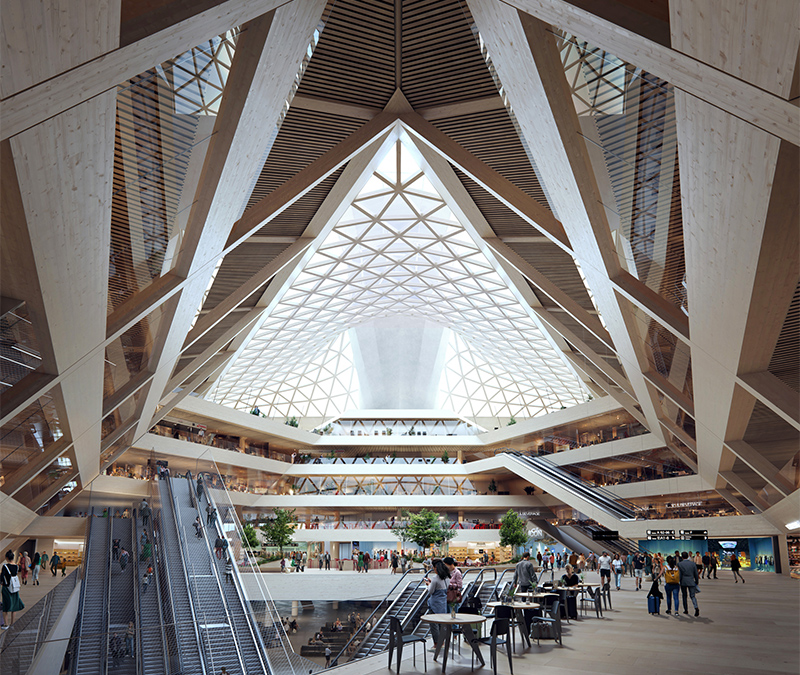
The eye-catching structure is made from local timber. A long, sculptural roof is clad entirely in solar shingles that convert sunlight into a source of energy. Bjarke Ingels describes this as “a simple yet expressive design – rooted in tradition and committed to innovation – embodying the cultural and natural elements of Swiss architecture”.
Guided by daylight
One feature that will appeal greatly to passengers is that the new terminal uses daylight as a natural wayfinding system. The wooden framed roof of the central space transitions into the air traffic control tower. This concrete supporting pylon also provides additional structural stability.
Friendly “main square”
The double-curved timber lattice shell at the apex of the atrium roof forms a skylight. This widens towards the central hub and opens into the atrium, where all departing, arriving and transferring passengers come together. To them, the central control tower looks more like a lighthouse and the space feels more like a main square than an airport.
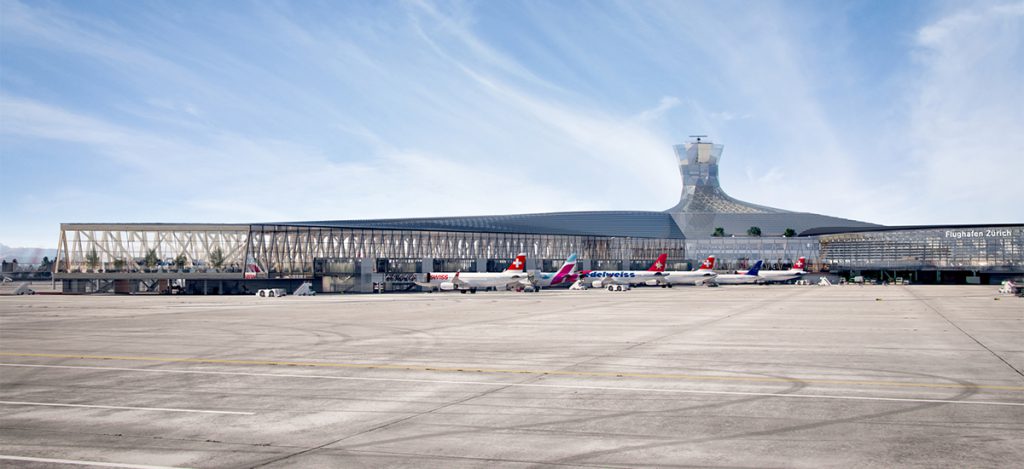
On arrival, travellers go to the centre of Dock A, which extends over seven storeys. The passengers are led through the bright, spacious atrium, where all floors are combined via stairs, escalators and lifts – from the underground immigration hall to all arrivals and departures levels through to the lounges in the upper floors of the central hub.
Major projects like this demonstrate that modern timber is an excellent choice of material, even for something on the scale of infrastructure construction.
Timber construction specialist Pirmin Jung
The structure, floors and ceilings of the new dock will have a modern, reduced spectrum of materials, with the main focus on timber. This decision by BIG and HOK’s team of architects has many advantages. The renewable, locally available resource allows components to be prefabricated efficiently during building. It also acknowledges the time-honoured Swiss tradition of timber construction.
In tune with the times
Swiss timber construction specialist Pirmin Jung, who is involved in the project, confirms that timber is alive and well: “As regards technology and output, our modern timber industry is well able to carry out a project of this scale on schedule using mostly Swiss wood.”
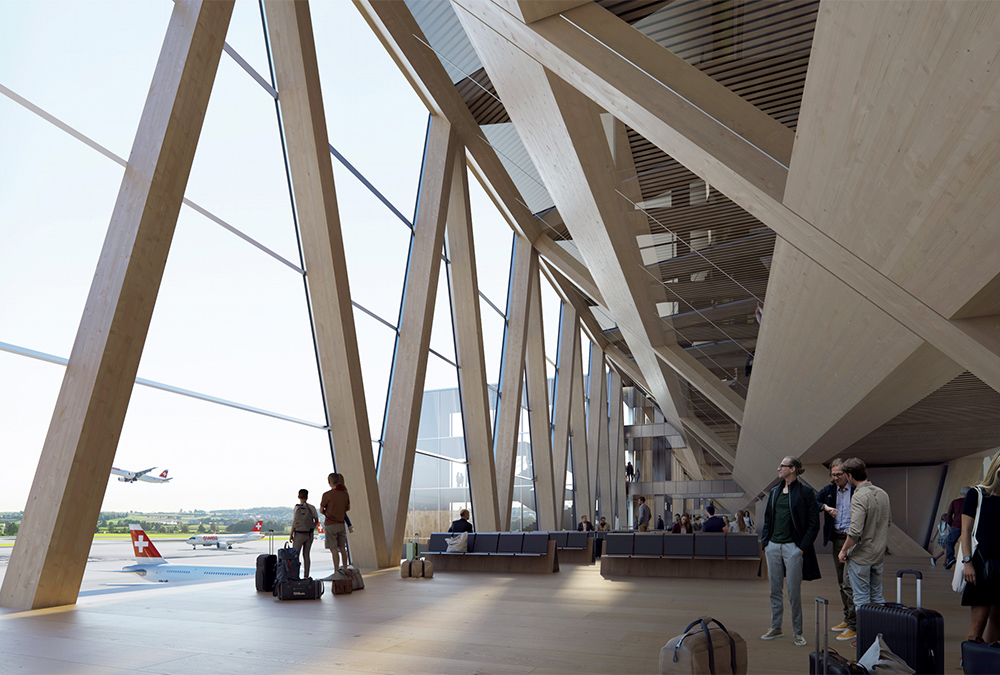
Jung is particularly pleased that projects like the one at Zurich Airport are drawing attention to this natural building material: “Major projects like this demonstrate that modern timber is an excellent choice of material, even for something on the scale of infrastructure construction. However, the advantages of timber go beyond its interesting load-bearing behaviour and pleasant vibe. Above all, it has a far better ecobalance than conventional construction methods.”
Innovative homage to Swiss tradition
The dock’s structural system consists of V-shaped timber columns and timber framing on the outer walls. Wooden ceilings at a height of over 12 metres span between beams inserted in the timber truss system. The multi-level root area is also constructed with wide-spanned timber box-beam elements borne by columns via the use of steel girders. The timber construction is supported by a reinforced concrete substructure. With this solution, the architects are referencing the centuries-old tradition and pitched roofs of the Alpine landscape.
The calm material palette, the natural light and the biophilia all help to redefine passengers’ expectations of the typical airport experience.
Martin Voelkle, architect and BIG partner
Other aspects of the winning design show the extent to which Zurich Airport wants its new terminal to be sustainable: the roof of Dock A is clad in PV panels, while integrated shading will reduce solar heat gain and the need for maintenance. A combination of water- and air-based cooling and heating systems will minimize the building’s energy requirements.
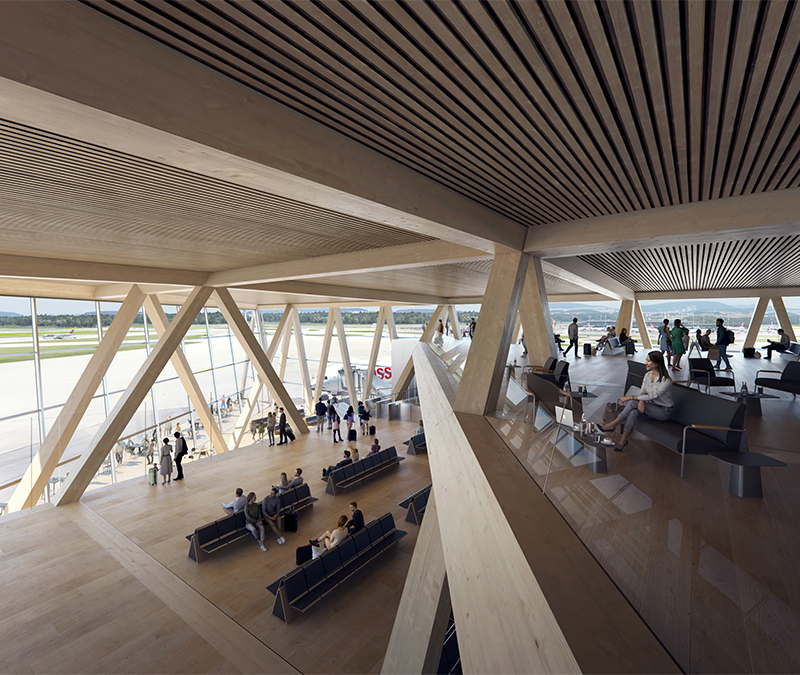
Of course, plenty of other airports have spectacular new buildings. Prime examples include Helsinki Airport’s Aukio extension with its audio-visual stimuli. Or the gigantic Beijing Daxing, which is currently the largest airport in the world. But Zurich Airport has done truly pioneering work with its sustainably designed Dock A. And with its “space frame” concept, it’s a safe bet that passengers will also enjoy spending time there.
Whole new airport feeling
After all, the design aims to provide an intuitive routing that will allow travellers to reach their destinations quickly and comfortably. And, as BIG partner Martin Voelkle puts it: “The calm material palette, the natural light and the biophilia all help to redefine passengers’ expectations of the typical airport experience.”
Setting the pace: Zurich Airport
The new terminal at Zurich Airport won’t do anything to alleviate the stress and discomfort of long-haul flights, but the wooden surroundings will certainly be a welcome sight for passengers when they arrive in Dock A. And the “space frame” concept will clearly show that timber is a suitable and sustainable choice for building projects of all sizes.
Text: Elisabeth Schneyder
Translation: Rosemary Bridger-Lippe
Images: BIG, Bucharest Studio, IMIGO
